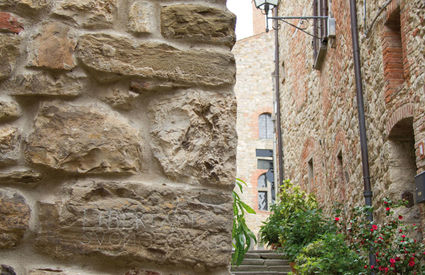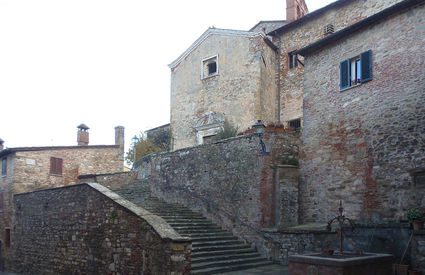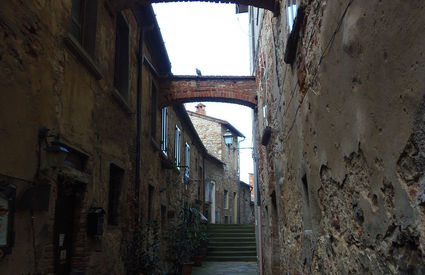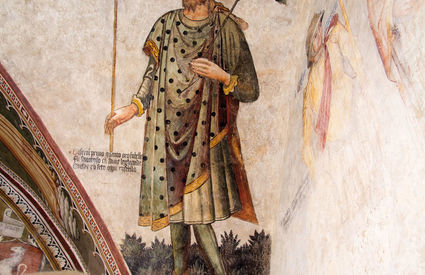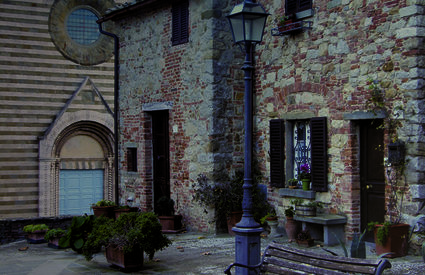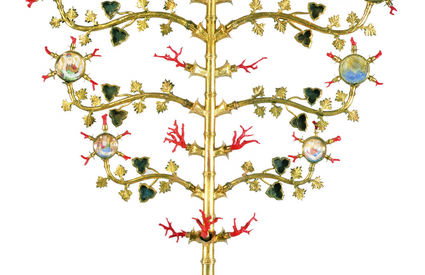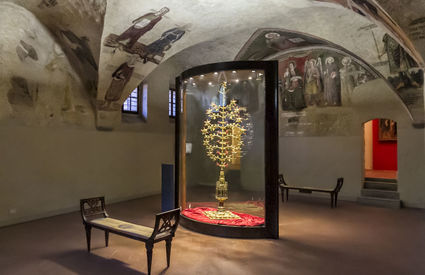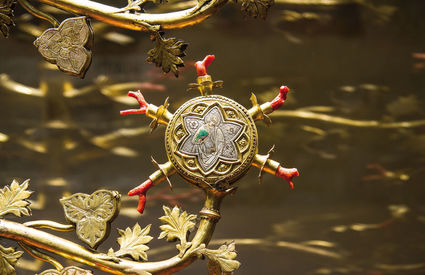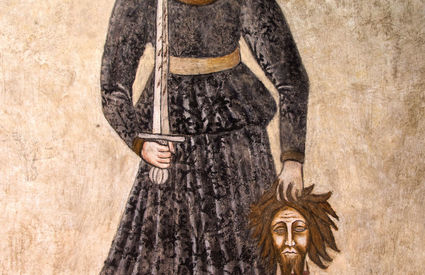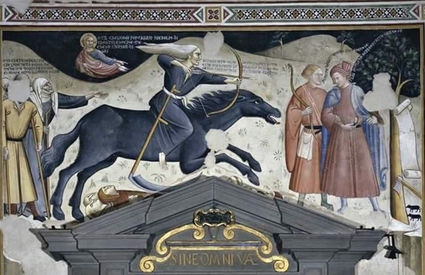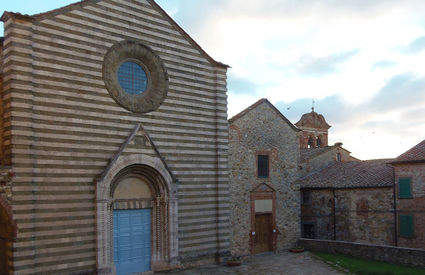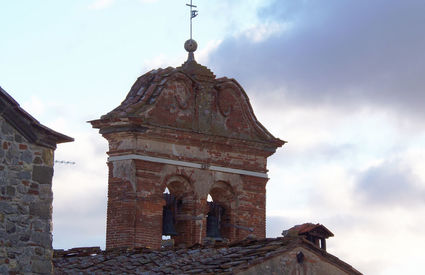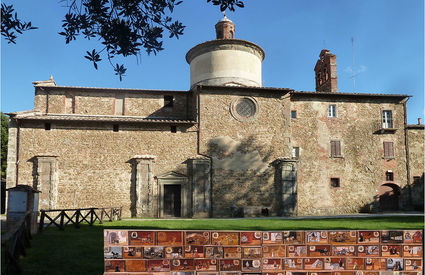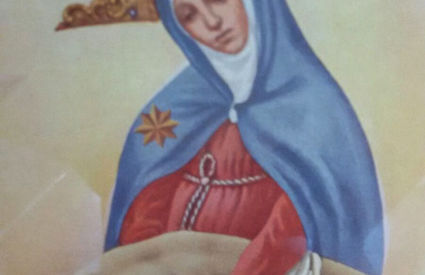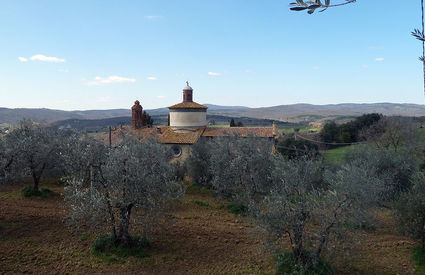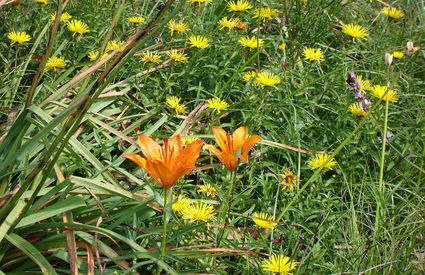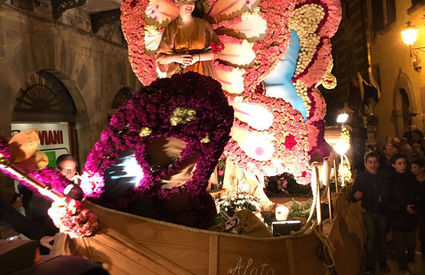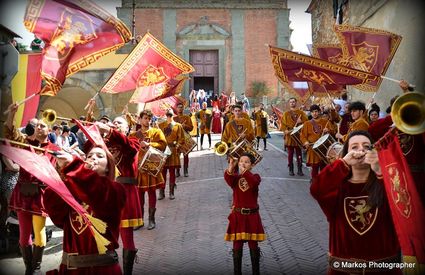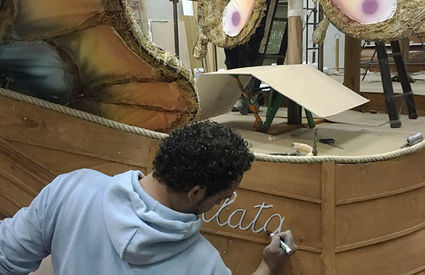Lucignano
A place with an aura all its own
A soulful journey through time, spanning art, legend and faith
A place with an aura all its own
A soulful journey through time, spanning art, legend and faith
Freedom of sound and song
A place with an aura all its own. She’d read this somewhere, but what did it mean?, she wondered as she walked, spurred on by curiosity, through those strange circular streets that wound their way upward, step after step, toward the top of the town. Freedom of sound and song would bring a stone to the spot where the steps intersected with an alleyway, marking the town’s peak.
Little by little as she moved along, she realized that her step was slowing, her thoughts roaming freely, and time was no longer an object. Once she reached the top, where everything had an air of both the sacred and the profane, of political and religious power, she sat down on a bench in front of the city hall, between the sky and earth in a timeless space: she then thought she was feeling the aura…
Signs and dreams of love through the centuries
In the mid-1300s, when the Franciscans commissioned Arezzo area goldsmiths to make a reliquary for the Church of Saint Francis—something celebrating Christianity through the metaphor of Christ as the Tree of Life—they never imagined that this powerful religious symbol, which took about a century of work to complete, would become the emblem of their town, a place with an aura all its own, a place that guaranteed that love would live on for the many people who exchanged vows before its glimmering branches.
Within the Tree of Life there are many archaic, pre-Christian myths and traces of cultural influences and blends, along with a rich supply of symbols that, through the centuries, have inspired historians, mystics, philosophers and artists. Time and human touch have worn it down a bit, but its fascinating air remains unchanged, as does the lovers’ legend—a sign in and of itself of the idea of love that the Lucignano community wanted to see in the work.
The Triumph of Death
I yearn for nothing but to end life/Yet I often avoid those who call out to me repeatedly/Reaching instead those who reject me
The knight of Death spoke these words as he galloped along on a black horse, as he was about to fling his arrows toward to young people who were affectionately conversing. To his left four panhandlers invoked his name. In the extraordinary St. Francis fresco, the protagonists speak while Christ, above them, invites everyone to meditate.
Those who want favor turn to you
The legend of an escaped Sienese knight who invoked the Virgin and was miraculously saved at the foot of the Querce (a water source known, since antiquity, for its mysterious curative powers and miracles, attributed to the Madonna della Querce), is told in ex-voto tablets by anonymous painters from the 16th to the 19th centuries. These were people with timeless faith, and their works are preserved inside the beautiful Sanctuary of Madonna della Querce.
You’re not from Lucignano if you’re not a contradaiolo
The Gaia Maggiolata is a beloved local tradition, full of ceremony.
There’s an entire year to plan the most beautiful float and finally these famous words ring out…
In this place full of grace and art / on
an average day, there’ll be songs/For the Gaia Maggiolata, which God loves! / Singers
and minstrels all about/Maidens and dancers with floral floats and strange
tools / Parade through the noble districts / making merry for the arrival of
the Forester/ ...
It’s an eternal tribute to Mother Earth, during the month dedicated to Mary, a
sacrificial rite for abundant harvests and, above all, a Spring festival focused on the triumph of life over death.


